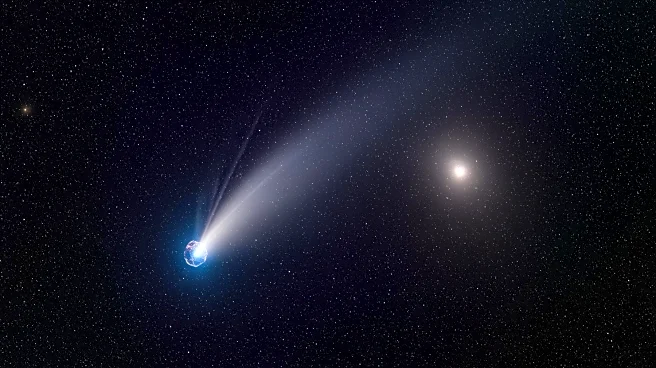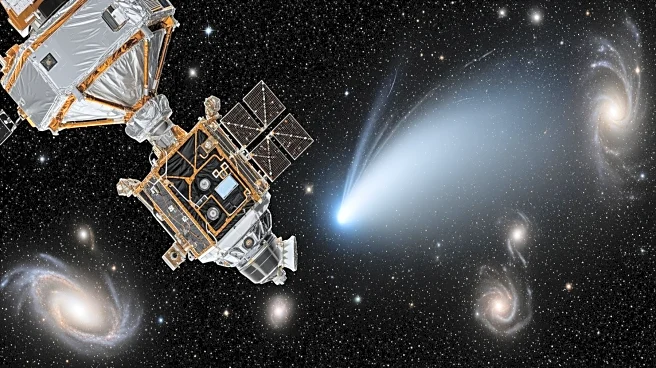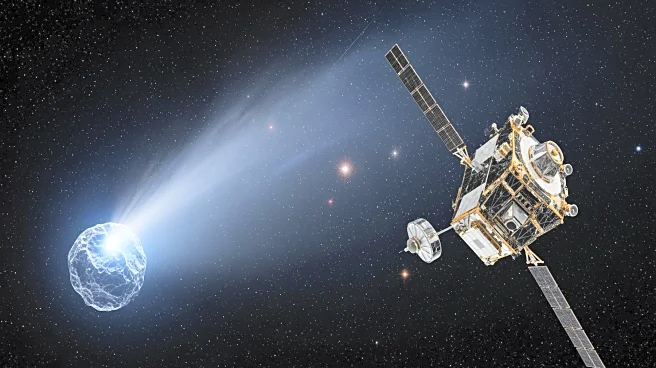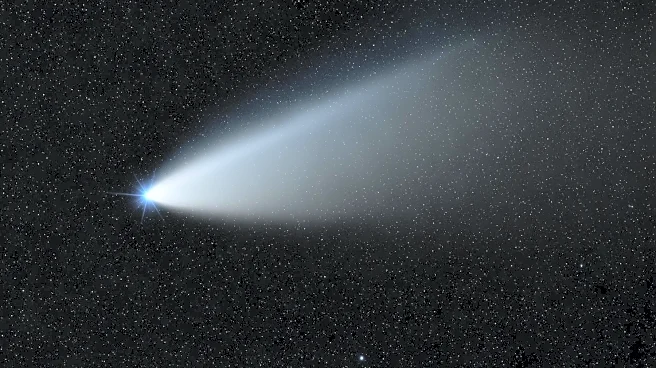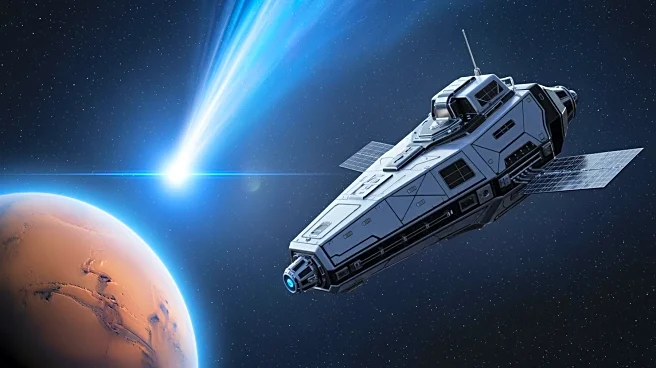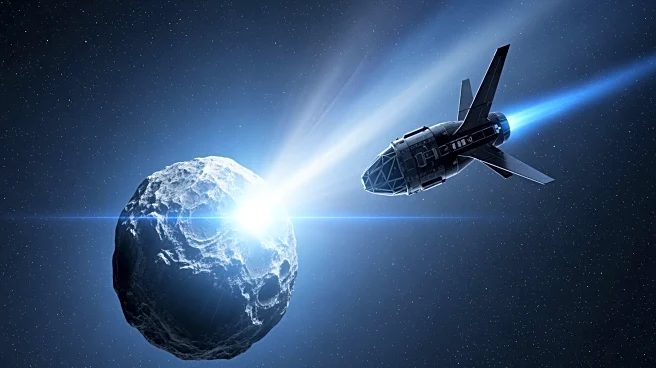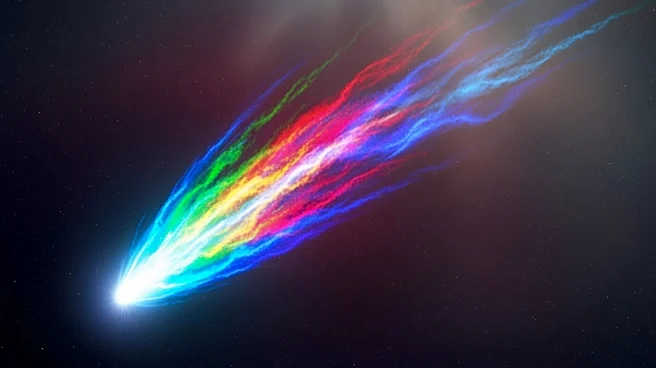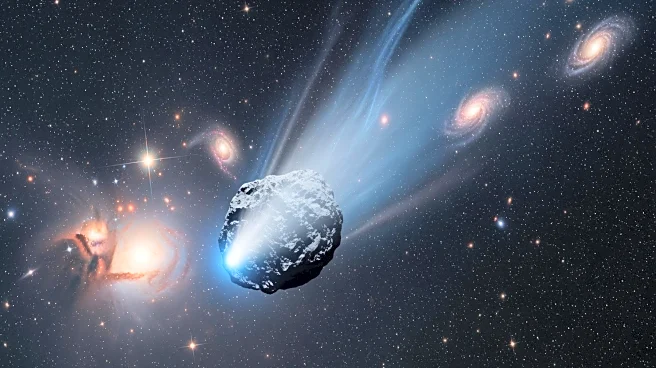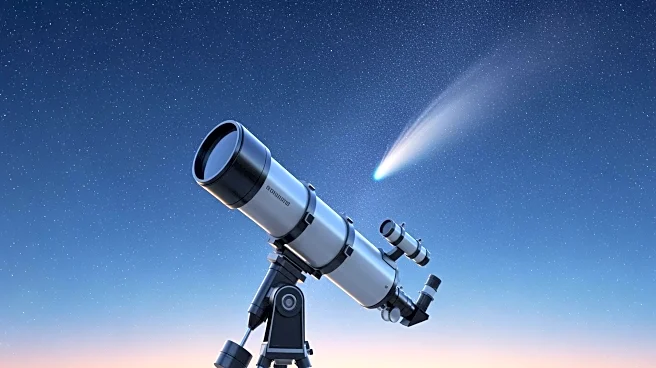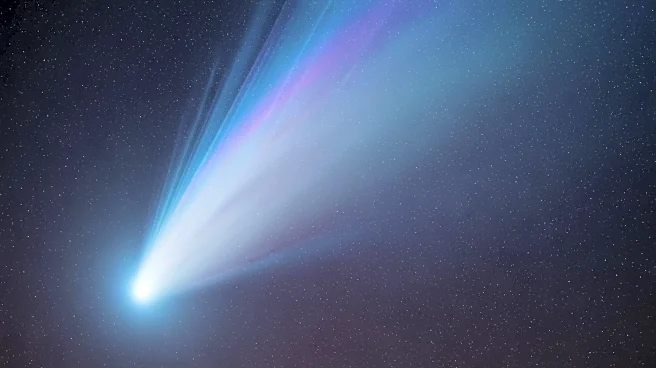What's Happening?
The interstellar comet 3I/ATLAS, currently passing through our solar system, may have been so radically altered by cosmic rays that deducing its home star system is impossible. Observations reveal unusually
high levels of carbon dioxide in its coma, suggesting that cosmic rays have transformed its appearance over billions of years. This process creates abundant CO2 and leaves behind a red residue, complicating efforts to trace the comet's origin. The comet is set to reappear in December, offering a chance to observe material beneath its surface that may have been protected from cosmic rays.
Why It's Important?
The study of interstellar comets like 3I/ATLAS provides valuable insights into the composition and dynamics of other star systems. However, the potential alteration by cosmic rays raises questions about the reliability of these comets as indicators of their origins. Understanding the impact of cosmic rays on cometary surfaces is crucial for interpreting data and making accurate assessments of their history. The findings highlight the challenges of studying interstellar objects and the need for advanced techniques to uncover their true nature.
What's Next?
Astronomers will continue to monitor 3I/ATLAS as it approaches the sun, hoping to observe material beneath its surface that may offer clues to its origin. Upcoming observations with the James Webb Space Telescope and ground-based telescopes will be crucial in searching for more pristine material. Researchers may also explore the possibility of visiting future interstellar comets with satellites to sample material directly. The study underscores the importance of continued observation and analysis to unravel the mysteries of interstellar objects.
Beyond the Headlines
The research raises questions about the nature of cosmic rays and their impact on celestial bodies. It underscores the importance of interdisciplinary collaboration and the role of advanced technology in expanding our understanding of the universe. The findings also highlight the potential for new discoveries to challenge existing theories and inspire further exploration of cosmic phenomena.
